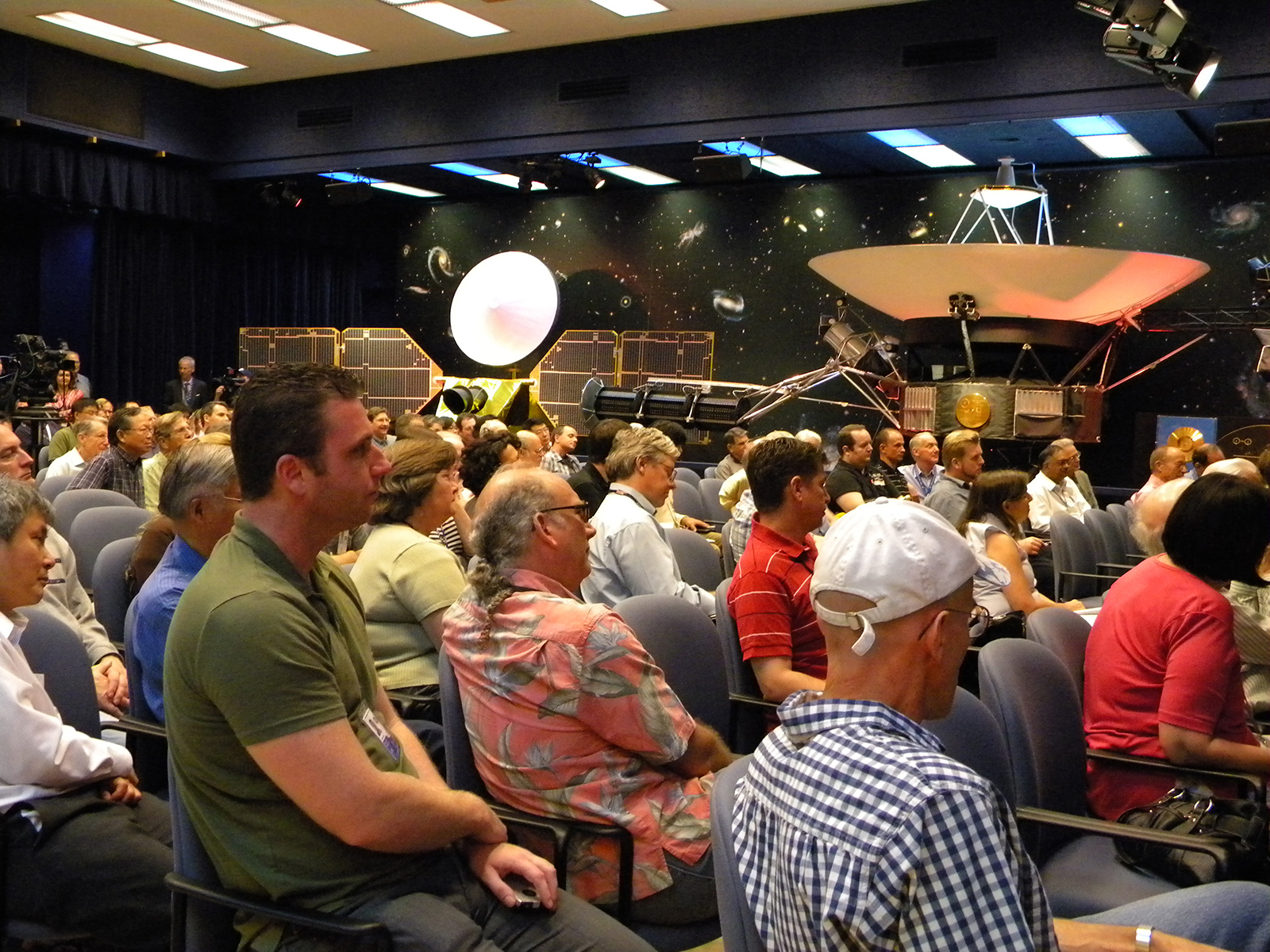News | September 5, 2012
Cheers, Voyager: 35 Years of Exploration

› Larger image
What would a birthday party be without cake, music and toasts? Thirty-five years ago today, NASA's Voyager 1 spacecraft launched on its mission of exploration. It is now the most distant human-made object and the second-longest operating spacecraft. (Voyager 2 is the longest.) NASA's Jet Propulsion Laboratory, Pasadena, Calif., which manages the Voyager spacecraft, held a celebration today.
The celebration included remarks by Charles Elachi, the director of JPL; Ed Stone, the Voyager project scientist; Ann Druyan, the creative director of the interstellar message project inscribed on the Golden Record that each Voyager spacecraft bears; Stephanie Wilson, an astronaut and former JPL employee; local dignitaries and others who have played key roles in operating the spacecraft through the years. A band led by a Voyager engineer also played "Johnny B. Goode," one of the songs from the Golden Record. The Golden Record is a 12-inch, gold-plated copper disk containing sounds and images selected to portray the diversity of life and culture on Earth.
The Voyager spacecraft were built by JPL, which continues to operate both. JPL is a division of the California Institute of Technology. The Voyager missions are a part of the NASA Heliophysics System Observatory, sponsored by the Heliophysics Division of the Science Mission Directorate in Washington.
For more information about the Voyager spacecraft, visit: https://www.nasa.gov/voyager and https://voyager.jpl.nasa.gov
